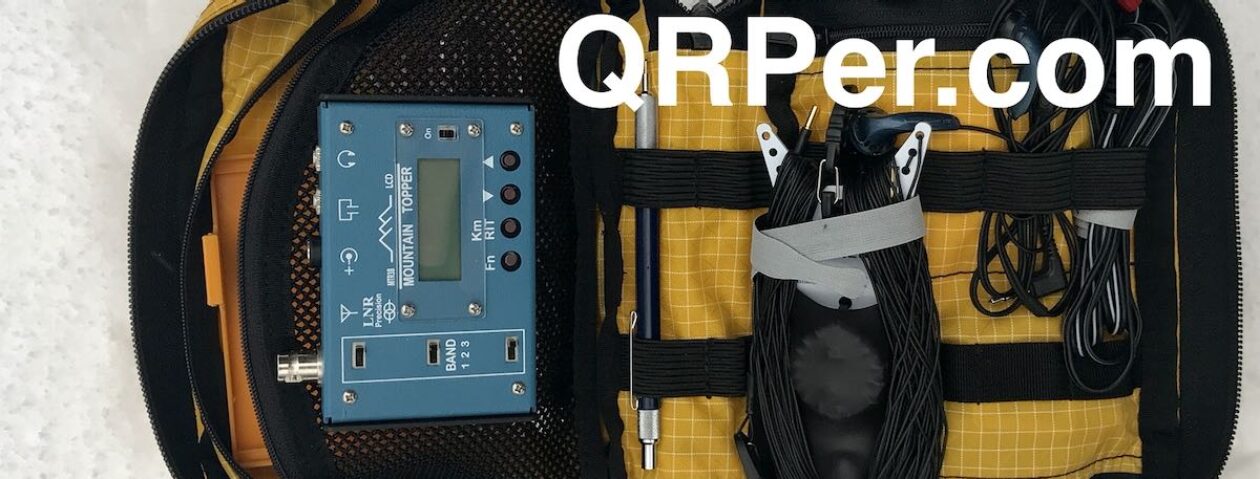Many thanks to Rand (W7UDT) who shares the following guest post:
The Prusik Knot… strain relief for Wire Antennas and Coax.
By W7UDT, Randall ‘Rand’ Tom
The Prusik knot is a simple, yet effective means to provide needed strain relief to wire antennas and coax, while deployed. It’s comprised of a simple loop or length of suitable cordage (of smaller diameter than the shank, Coax or Wire, it secures).
The link below, is from our friends at Animated Knots…. It’s a brief video tutorial on how best to tie the Prusik knot. Having the Prusik in your ‘bag of tricks,’ will help make your next field deployment be a successful one.
https://www.animatedknots.com/Prusik-knot
As seen in the instructional video, the knot is comprised of a simple loop of cordage, sufficient in length for the task, which is fine, but, I would recommend NOT making a loop. Rather, keeping tag ends for easier anchoring. These tag ends should be at least 12” in length. This is called an open-ended Prusik. Either way, both have utility.
To do this, fold a 24” of cordage in half, to make a ‘bite.’ Lay the bite over the shank of the coax or wire, and feed the tag ends inside the bite loop. This forms a larks-head knot. Wrap two additional turns around and through, then dress and test the knot to form the Prusik. Simple. Anchor (tie) the tag ends at a point where strain relief is best positioned. Then adjust (slide) it to load.
After deployment, I would also recommend leaving the Prusik attached. It comes in handy, when coiling your feed lines or elements later for proper storage.
The Prusik allows it to slide along the wire or coax while free of tension, yet it holds fast under load. Much like a monkey’s fist hanging onto a vine. The tag ends, can then be affixed to suitable anchor where needed. The key here, is using a smaller diameter cordage, than the wire or coax itself.
The Prusik, along with similar ‘Friction Hitches’, can be used in any number of applications in Ham Radio. e.g. Anchoring coax, joining linked antenna elements, power cords, and adjustable guying. The list is long, wherever strain relief is needed.
I would encourage you to tie it, try it, test it, and judge for yourselves. As well, I would encourage you to check out other useful climbing friction hitches… YouTube is a great place to start. I hope you find this useful afield, and to hear you ‘On the Air!’
73! de W7UDT (dit dit)
W7UDT, ‘Rand’, lives and operates near Boise Idaho, with his lovely wife Stacy. Portable QRP operations, along with his Jeep and Harley are his ‘vices.’ Your comments and questions are welcomed. My email is kd7uxq@yahoo.com.





Rand, a really useful article and a great idea to submit.
Thomas, how about periodic “radio field craft” related articles? We can all learn something from others experiences and successes (or failures).
Richard M0RGM
I love that idea so much, I just changed the title and category name! Thank you for the suggestion, Richard.
Also, again, thank you for the excellent skill share, Rand!
We’re ‘Amatuers’ in radio communications. The lessons we learn are best shared. That’s why I like this forum… It’s where we can all share. 72! de W7UDT
Thanks.
I would love to see a blog post along the lines of “Top 5 knots for Hams; and When to use them”.
I would blog it but I don’t know knots. I just usually make a bunch of knots until I get something that will work.
W4MKH
https://w4mkh.com
Marshall… thanks for the vote of confidence… and yes, I plan to write other radio field craft articles.
72. de W7UDT Rand (dit dit)
The old mountain man adage is true: the more you know, the less you have to carry.
A small roll of cordage and a big brain full of knowledge, and you can accomplish all sorts of things. Thanks for sharing.
How true!
I think the author meant to use “bight” rather than “bite.”
https://www.merriam-webster.com/dictionary/bight
Brilliant ! Going to put this to use right away.
The Prusik Knot creates a 90 degree force to the coax under stress. Can be seen on one of the pictures. There are other knots, like the ‘ICICLE hitch’, ‘Blakes hitch’, ‘rat tail stopper’ or a the ‘double prusik’ (Google will find them all). Their end loop is in the same vector as the remaining coax. I am using a similar hitch like the ‘rat tail’ just with one thin rope. 3 or 4 loops holding the coax at outdoor activities or during holiday installation.
73’s de OE1MWW
Wolfgang
Or just a simple pipe hitch. Great comments, great article